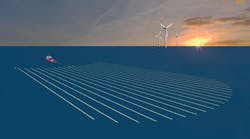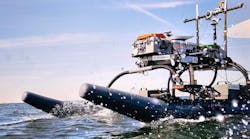Outer space and ultra-deepwater environments are more similar than one may think. Both offer huge short- and long-term scientific and commercial rewards, but the challenges are substantial. Without breakthrough engineering, intense collaboration and innovative thinking, neither of these frontiers can be accessed because the technology gap is too great.
The International Space Station was built to withstand decades of repeated expansion and contraction associated with temperature swings of 500°F (260°C) every 90 minutes-the time it takes the station to orbit Earth and experience a "day-and-night" cycle. The challenge, and the amount of engineering, collaboration, and imagination that went into meeting it, were similar to what the industry faces in ultra-deepwater plays. Producing these plays will require advanced completion and production systems, aggressive stimulation techniques, and a downhole infrastructure capable of supporting decades of high flow rates in extreme environments. That, in turn, will require some of the most complex technology the world has ever seen.
While the recent collapse in oil prices has renewed interest in reducing development costs and has caused some operators to reduce activity and delay development projects, the world still needs new sources of hydrocarbons. This need will continue long after the current downturn has ended. Offshore fields hold great potential for meeting this need. According to the independent consulting firm, Rystad Energy, approximately 40% of all hydrocarbon resources discovered since 2010 have come from deepwater provinces around the world. Some experts have predicted that deep and ultra-deepwater may someday produce in volumes to rival the shallower continental shelf areas.
Offshore exploration and development have been catalysts for innovation - first in shallow waters, next on the continental shelves, then into deepwater, and now in the ultra-deep. At each turn, new technologies and new ways of thinking and working have reduced uncertainty, increased reliability and safety, and opened new realms to development. Many technologies originally developed for deepwater have found applications onshore, including as enablers for accessing and developing shale and other unconventional assets.
The Gulf of Mexico's Lower Tertiary play has been described as the scene of a 21st century "gold rush" for the oil and gas industry. It also has been characterized as an innovation rush. Both are true.
Estimated reserves in the Lower Tertiary range from 14 to 40 Bbbl of oil-enough to heat 100,000 homes for a century or longer, and worth up to $2.4 trillion at $50-60/bbl. It is also estimated that every 1% increase in recovery from the Lower Tertiary will equate to a NPV of $2 billion at $50 oil. This number is particularly important in a market where even an incremental increase in recovery can significantly improve project economics and may determine whether a project is economically viable.
The size of the Lower Tertiary prize is huge, but so are its challenges. Water is as deep as 10,000 ft (3,050 m). Reservoirs are buried 5 mi (8 km) beneath the ocean floor. Reservoir pressures and temperatures can reach 25,000 psi (1,700 bar) and 300°F (150°C), respectively. The tight, thick rock is difficult to crack, so oil does not flow naturally to the surface like it does in other reservoirs. And, average recovery factors are low.
As operators began to set their sights on huge reserves in this and other ultra-deepwater plays, the disparity between the current state of deepwater completion and production technology and what is needed for tomorrow's wells became obvious. Well conditions in these frontiers are unprecedented with respect to the industry's historical tool performance and are beyond the capabilities of most available completion and production equipment.
Safe, economic development of these reservoirs will require breakthroughs in technology-and much higher levels of collaboration and trust between operators and their service providers than have existed in the past. For example, producing the Lower Tertiary will require a wellhead-to-reservoir completion and production system built specifically for its geology, well conditions, and production demands. Anything less and the risk could outweigh the potential reward.
Closing the technology gap for ultra-deepwater development will depend on breakthroughs, not only in technology, equipment, and system reliability, but also in the supply chain required to bring new technologies to market quickly. Only through complex engineering, intense collaboration, and innovative thinking will these breakthroughs occur.
An example is the first fully integrated, ultra-deepwater completion and production system. The system was introduced at the 2015 Offshore Technology Conference in Houston and was delivered in half the time it would typically take for something of its complexity and scope. The system was developed by a 95-person, cross-functional and cross-disciplined team. The integrated product team (IPT) was cohoused at a technology center and operated outside the typical business model for product development. This reduced the time required for engineering design and validation, testing, and manufacturing. The IPT worked closely with deep- and ultra-deepwater operators throughout every phase of development to make sure the final product would meet their expectations and comply with industry regulations. A system statement of requirements was created and implemented to ensure that the lower-level development of tools and sub-systems were governed by system-level requirements. All process improvements for the project have been incorporated into the design process in the IPT and have been transitioned into the company's broader completions technology development teams.
Just as the International Space Station drove the development of new technology for outer space environments, dedicated, intensely collaborative teams will help close the technology gap for the Lower Tertiary and other ultra-deepwater frontiers.
We have taken the first steps. We are now embarking on the longer journey.
Richard Ward
President, Global Products & Services
Baker Hughes




